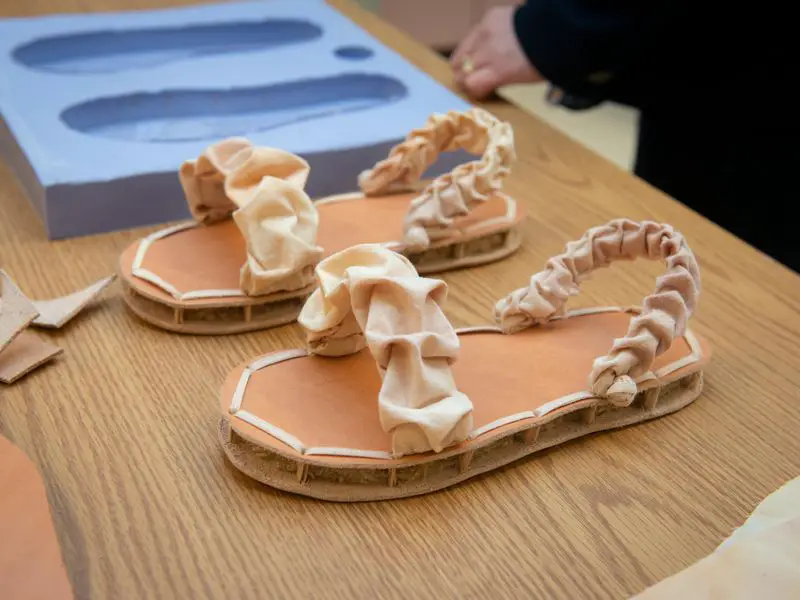Are These Eco-Friendly, Baked Mushroom Sandals The Future Of Fashion?

By Amanda Froelich Truth Theory
If you’re looking for new treads and seek to make an environmental statement, we’ve found the perfect footwear for you. Though the use of mycelium (the interlocking root system that results in forests of mushrooms) in clothing, bed sheets, and even wedding dresses is nothing new, these newly-developed sandals, which are both fashionable and sustainable, are.
The fungi footwear was developed by Jillian Silverman, an apparel graduate student of the University of Delaware. She designed a prototype shoe that combines mushrooms, agriculture waste, and fabric scraps. Silverman explained,
“A lot of fashion fabrics are not compostable or it takes a really long time for them to break down. Everything is natural, everything is biodegradable, nontoxic. It’s a perfect solution to reducing the impacts of textile waste, reducing toxic inputs and using all renewable inputs.”
After learning that mushroom mycelium can be used in everything from packaging materials to building materials, Silverman figured it could also be implemented into fashion products. It helped that the university she attended is conveniently close to Kennet Square, Pennsylvania, which is the “the mushroom capital of the world.” Because of this, she can source mushrooms from local farmers.
The testing process was arduous, but worth it. After experimenting with a variety of fungi, Silverman concluded that reishi, oyster, king oytser, and yellow oyster varieties are the most durable. Next, she designed a shoe sole mold in which the mycelium can be grown into a specific shape. It takes only one week for mycelium to fill any mold.
After a mold is filled, Silverman bakes the fungi. She says this process halts the growth and prevents the mushrooms from fruiting on the surface. “There is only a slightly earthy smell during the growing process,” said Silverman. “There is no live fungi in the finished product.
The mushroom soles were paired with an insulation material comprised of recycled cotton and jute. The rough fiber is similar to twine or rope therefore, is very durable. Silverman also used fiber-rich psyllium husk, cornstarch, and chicken feathers. The last ingredient supposedly adds strength to the final product.
The final product is compostable and biodegradable. The invention is exciting, because it has the potential to replace rubber and other manmade components entirely.
There is a downside to the fungi footwear. According to John Taylor, a professor of plant and microbial biology at the University of California at Berkeley, the shoe sole is far from ready to wear. This is because, despite being treated to prevent water intrusion, mycelium may absorb water if untreated. This would lead to degradation of the shoe soles. “If the mycelium is treated to prevent absorption of water, the shoe sole function would be improved, but the compostability would decline,” said Taylor.
To this, Silverman responded: “Mycelium is naturally water-resistant so we believe if we let it grow to fully cover the substrate materials that the shoes would be able to tolerate at least some moisture.” She did admit, “we do have some concerns about the flexibility of the material.”
The invention needs some fine-tuning. But, it is not exciting that eco-friendly alternatives already exist? Within the next 5-10 years, the world we inhabit is expected to dramatically change — let’s hope, for the better.
What are your thoughts? Please comment below and share this news!
Image Credit: Silverman’s mushroom shoe prototype (provided by the University of Delaware)
Leave Comment: